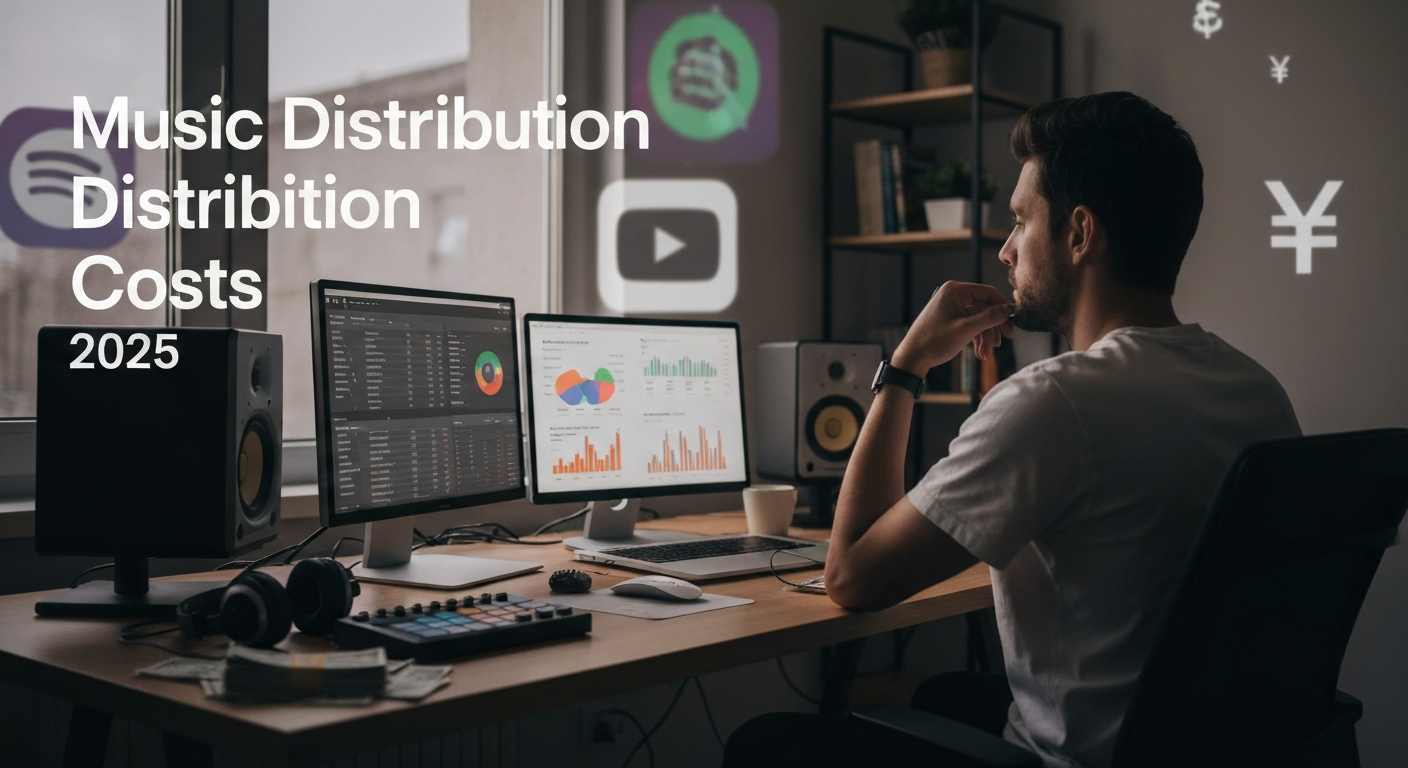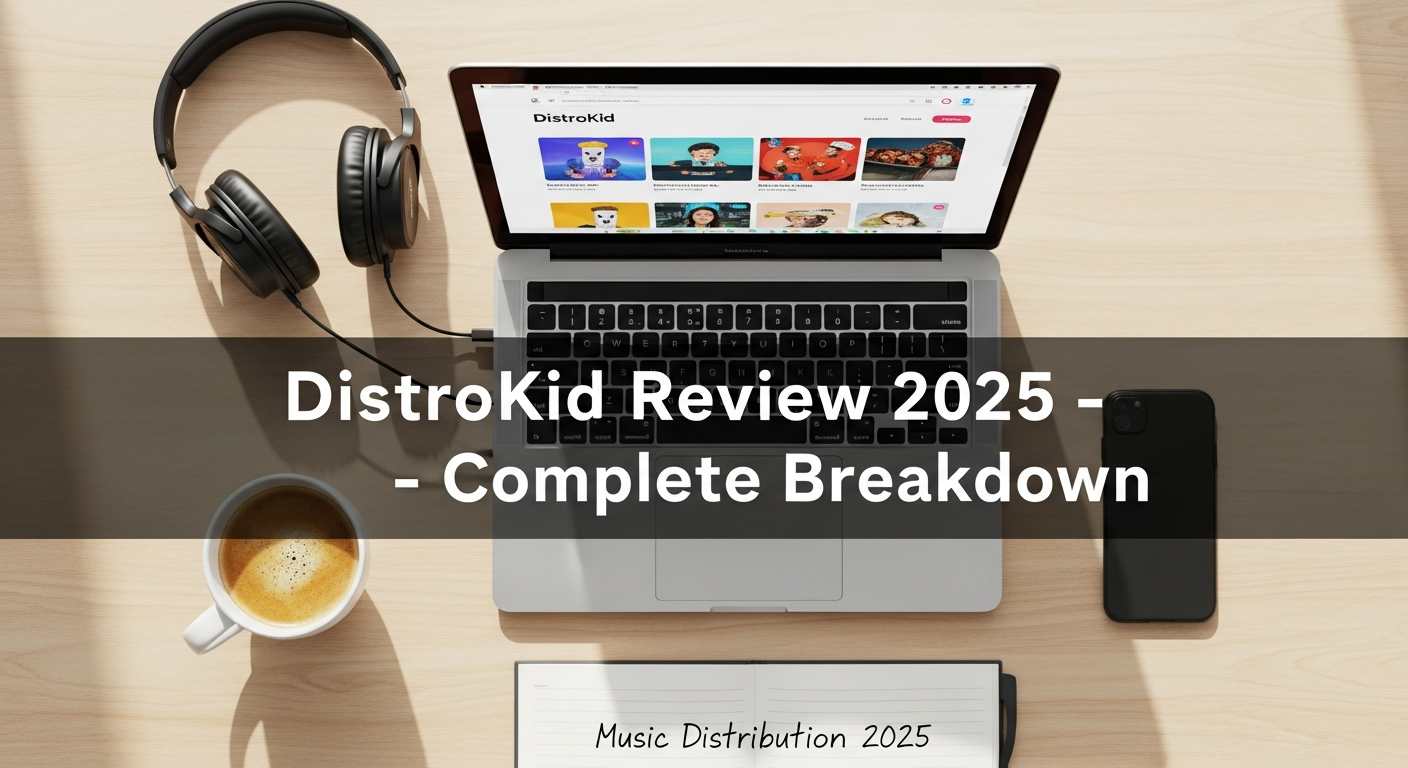Introduction
Understanding music distribution costs is a vital step for independent artists in 2025. With a range of distribution service options available, knowing exactly what you pay for—and the value each service delivers—helps you release your music confidently, avoid unwanted fees, and secure the highest earnings. This guide reviews pricing models, explains the pros and cons of paid versus free distribution, and shares the best strategies for choosing a music distribution service that fits your needs.
What Are Music Distribution Costs?
Definition and Types of Fees
Music distribution costs are the fees artists pay to release their songs on platforms like Spotify, Apple Music, Amazon Music, and YouTube. Distributors take care of uploading your music and sending it to stores, typically charging a one-time fee, a yearly subscription, or a percentage of your royalty earnings. Some companies also offer free plans that require sharing part of your royalties.
Common Distribution Costs
- One-Time Per Release: Pay once to upload a single or album (ex: CD Baby charges $9.99–$34.99 per release).
- Annual Subscription: Unlimited uploads for a yearly fee (ex: DistroKid $24.99/year, TuneCore $22.99/year).
- Commission Model: Free to upload, but distributor takes a royalty percentage on your earnings (ex: RouteNote, Amuse).
- Hybrid Plan: Combines annual fee & royalty share, often with premium features.
Watch for Hidden Fees
- Charges for barcodes (UPC/EAN)
- Takedown fees for removing releases from stores
- Costs for royalty splitting
- Fees to assign ISRC codes
🧠 Why Music Distribution Costs Matter
Efficient Budgeting
By knowing your upfront and recurring costs, you can better plan your releases and limit surprises.
Maximizing Profits
Choosing a lower-cost option might mean higher earnings, but sometimes higher-priced plans deliver critical extras that save money and time in the long run.
Feature Access
Paid plans often include enhanced features—such as faster support, advanced analytics, playlist pitching, and royalty splitting—which help independent artists grow faster.
Scalability
If you release music regularly, unlimited plans are usually more economical. For occasional releases, per-song pricing could be more cost-effective.
Types of Music Distribution Fees and Providers
Major Distribution Platforms (With Examples)
| Distributor | Fee Type | Starting Price | Royalty % | Key Features |
|---|---|---|---|---|
| DistroKid | Annual Subscription | $24.99/year | 0% | Fast payouts, splits |
| TuneCore | Annual Subscription | $22.99/year | 0% | Publishing, YouTube tools |
| CD Baby | Per Realese | $9.99–$34.99 | 9% | Physical, sync options |
| Amuse | Free/Annual | Free/$23.99+/yr | 0–15% | Mobile app, royalty splits |
| RouteNote | Free/Premium | Free/$10+ | 15%/0% | Unlimited uploads |
| LANDR | Annual/Bundles | $99+/year | 0% | Mastering, samples |
Is Paid Music Distribution Worth It?
When to Choose Paid Distribution
- Frequent releases (multiple singles/albums per year)
- Desire to keep 100% of royalties
- Value from advanced features (splitting, analytics, playlist pitching)
- Need for rapid store updates or takedowns
When Free Distribution Might Work Best
- First releases or testing new markets
- Willingness to accept lower royalty payouts in exchange for no upfront fees
- Beginners who want to try digital release without financial commitment
Tips for Making the Best Choice
- Compare total expected costs based on your release schedule.
- Review feature lists—custom splits and analytics may be essential.
- Read all terms for hidden fees.
- Consider future needs and scalability.
🎬 Making the Most of Your Distribution Budget
Estimate Your Release Volume
Assess the number of singles/albums you want to launch this year to decide which fee model suits you best.
Compare Features and Fees
List must-have features (splits, analytics, physical release options) before choosing a plan.
Avoid Surprise Charges
Always review the terms of service. Be mindful of extra charges for barcodes, takedowns, or royalty splits.
Plan for Growth
Pick a plan that supports regular releases or scaling up, so you’re not forced to switch platforms later.
Related Internal Resources
- Independent Music Distribution Guide: Release Your Music Without a Label
- Music Royalties Streaming 2025: Income Guide for Indie Artists
- Music Monetization Strategies 2025
✅ Pros and Cons of Paid vs. Free Distribution Services
Advantages
- ✔ Predictable annual or per-release costs
- ✔ Quick and global store delivery
- ✔ Robust analytics and playlisting tools
- ✔ Retain full control of your royalties (with unlimited plans)
- ✔ Built-in support and royalty splitting
Disadvantages
- ❌ Fixed costs even when not releasing music frequently
- ❌ Free service = give up a percentage of royalties
- ❌ Extra/hidden charges for advanced features
- ❌ Different platforms offer variable reach and support
- ❌ Switching providers can mean re-uploading your catalog
External Music Distribution Cost Resources
- SoundCamps – Music Distribution Services Compared
- iMusician – Best Music Distributors 2025
- Amuse – Free vs. Paid Music Distribution
- LANDR Blog – How Much Should You Pay for Distribution?
- Ditto Blog – Distribution Pricing Explained
💡 Final Thoughts
Music distribution costs should help your career—not hold you back. Start with your needs and budget, read the details of each option, and invest wisely. Paid distribution often pays off through higher royalties, flexible features, and increased control. Ultimately, choosing the right partner sets you up for long-term success and more reliable revenue from your releases.



